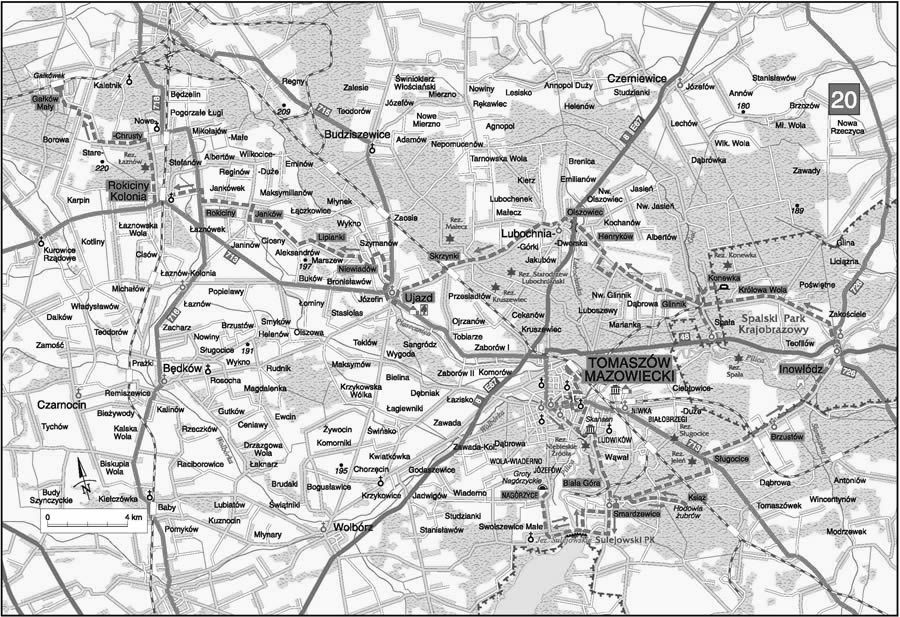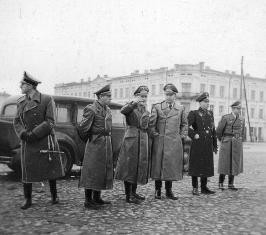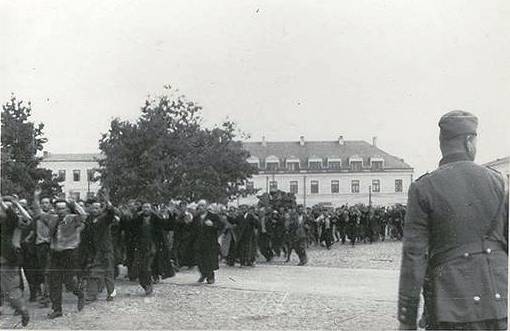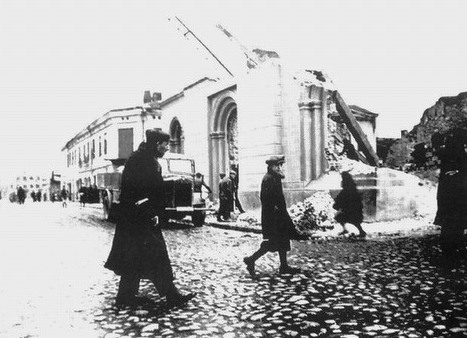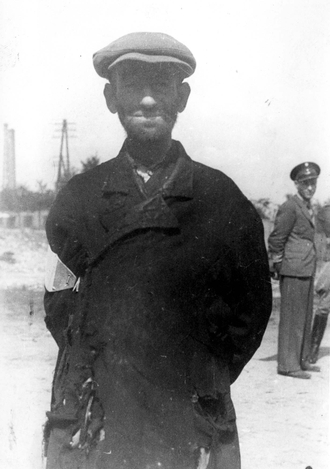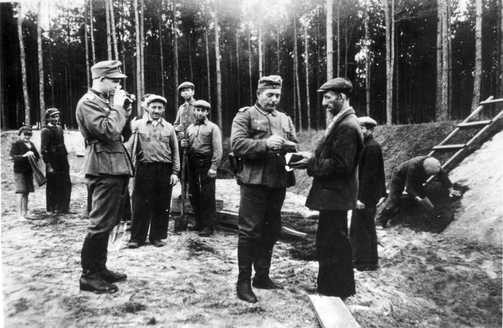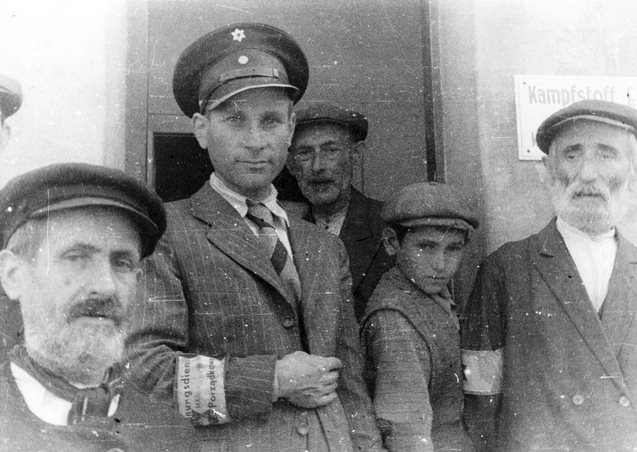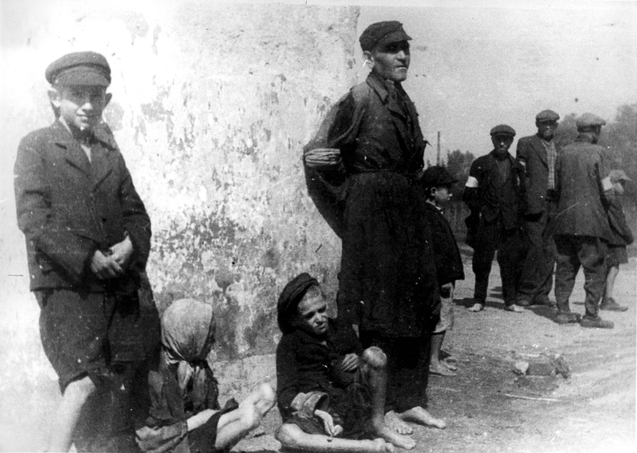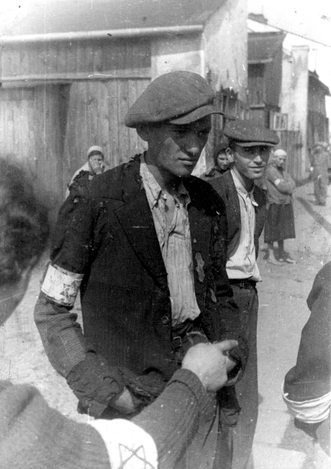Tomaszow Mazowiecki A town and its destruction under the Nazi Occupation
Tomaszow Mazowiecki during the inter-war years had a Jewish population of about 10,000 approximately this was one third of the town’s population. Most Jews in Tomaszow Mazowiecki were merchants or artisans, although a substantial number also held blue or white-collar jobs at an artificial silk factory.
A number belonged to Jewish Trade Unions - the community had many charitable institutions, including an orphanage, and an old-people’s home that was supported by donations from Polish expatriates.
A range of educational institutions included three Szabasowka schools, a Talmud Torah run by Agudath Israel, a bilingual Polish-Hebrew Jewish high school, a Jewish popular college that was also attended by non-Jews, and Polish high schools.
Zionist political Parties and youth movements ran a pioneering training centre, The Bund, its youth movement, and Agudath Israel were active as well. Many Jews belonged to a local chapter of the Communist Party. Most Parties sponsored cultural associations, drama groups and libraries. By the eve of the Second World War, the Jewish population had increased to approximately 13,000. The Germans occupied Tomaszow Mazowiecki on the 5 September 1939 and within eight days they had arrested about 1,000 inhabitants of the town, including some 300 Jews, and in the process sent 90 Jewish men to the Buchenwald concentration camp in Germany, only 13 were alive at the end of the war in 1945.
The Germans also abducted Jews for forced labour and the Germans imposed harsh restrictions, Jews were only allowed to circulate in the town streets between eight o’clock in the morning and noon. The Germans burnt down the Great Synagogue on the 16 October and set fire two other houses of worship on the 7 and 14 November
During the first few months of the occupation, a number of Tomaszow Mazowiecki Jews, including many youths, fled to Soviet controlled territory, in spite of this the towns Jewish population increased due to a large influx of refugees from Lodz and Warsaw. In late 1939 in line with Reinhard Heydrich’s, the head of the RSHA, edict a Judenrat was established under Baruch Shoeps and his deputy Leibush Warsager and a Jewish Order Service was set up under Josef Goldberg. In late 1940, after the Gestapo arrested Shoeps and beat him to death, Warsager took over as Chairman of the Judenrat. In early December, the Judenrat was ordered to furnish the Germans with 1,000 Jewish labourers daily and during the period 1940 -1942 hundreds of Jewish men from Tomaszow Mazowiecki were sent to the Zawada labour camp and other locations.
A ghetto was established on the 20 December 1940, in three different parts of the town under the command of the county governor Karl Giehn. Jews were not permitted to leave the ghetto without permits, but many violated this restriction. In March 1941 approximately 1,000 Jewish refugees from Plock reached the ghetto prompting the Judenrat to organise a soup kitchen, the kitchens output gradually increased and it soon served 1,500 meals per day. In May 1941 there were 15,306 Jews living in the town, including 3,536 refugees, five months later about 1,500 Jews were deported from Tomaszow Mazowiecki to the nearby towns of Zarnow, Drzewica, Biala Rawska and Nowe Miasto.
In December 1941 two of the three sectors of the ghetto were evacuated, their inhabitants were either placed in the third sector or deported to Opoczno, the ghetto became grossly overcrowded, in some dwellings this resulted in more than ten people per room.
Primary and secondary studies were conducted in secret until the end of 1941, one of the teachers was Dr Bornstein, a former principal of the town’s Jewish high school The soup kitchen was shut down in November or December 1941 because of lack of food, the sixty-bed ghetto hospital, run by Dr Efraim Mordkovich of Lodz struggled to cope with a typhus epidemic, which broke out in 1941 due to poor sanitary conditions in the ghetto.
Hundreds of Jews, including many children, were shot to death by German police while attempting to smuggle food into the ghetto and in late April and early May 1942 the Germans murdered between 100 and 200 Jews, including intellectuals and almost all members of the Judenrat.
Rumours about the liquidation of the ghettos of Warsaw and Piotrkow Trybunalsky reached Tomaszow Mazowiecki in the summer and autumn of 1942 and soon it was their turn.
On the night of the 28 October 1942 German, Ukrainians and Latvians surrounded the ghetto, armed to the teeth. Many Jews who attempted to flee were killed or wounded. The following day, the Germans informed the Judenrat that the entire ghetto population would be deported “to the East.”
Hundreds of Jews from Biala Rawska, Rawa Mazowiecka, Ujazd and other villages in the vicinity reached the town that night and were concentrated in a yard surrounded by barbed wire. Many were killed during this operation.
On the 31 October 1942, German police rounded up all the Jews in the Tomaszow Mazowiecki ghetto, townspeople and refugees alike. In the ensuing “aktion” which lasted until the 2 November, hundreds of Jews were murdered and some 15,000 were sent to the Treblinka death camp.
The “aktion” to liquidate the Tomaszow Mazowiecki ghetto excluded between 900 – 1,300 Jews, mostly young people and refugees who were left behind together with several hundred Jewish townspeople.
This group comprised artisans, a few practitioners of liberal professions, remaining members of the hospital staff, the Judenrat and the Jewish Order Service. Yosef Goldberg was placed in charge of the Jewish Order Service; his deputy was Mulek Milstein. The rump community was housed in a confined area known as the “small ghetto,” enclosed in barbed wire and guarded by Germans and Ukrainians. Most of its inhabitants set out for work every day under guard, a few gathered and sorted belongings that were left behind by those deported, whilst others toiled in workshops in the ghetto and factories on the “Aryan” side of the town. On the 5 January 1943, German and Ukrainian forces surrounded the ghetto as trucks and wagons were brought in. Over the course of the following two days 250 Jews were deported to Ujazd and then subsequently to the Treblinka death camp.
In February 1943, two German policemen murdered twenty-one Jews, among them Jewish policemen and several physicians, including Dr Mordkovich, the corpses were buried in the Jewish cemetery.
By May 1943, only 600 to 900 Jews inhabited the ghetto, a selection was performed on the 31 May and all of Tomaszow Mazowiecki remaining residents were taken to the labour camp in Bilzyn. Thirty –six to thirty-eight Jews were left behind to clean up the ghetto area and on the 5 September 1943 they were taken to the labour camp in Starachowice.
Sources: The National Archives KEW Wiener Library The Chris Webb Archive Public Records Office, London Polish Museum in the United Kingdom Copyright Chris Webb H.E.A.R.T 2012 |
